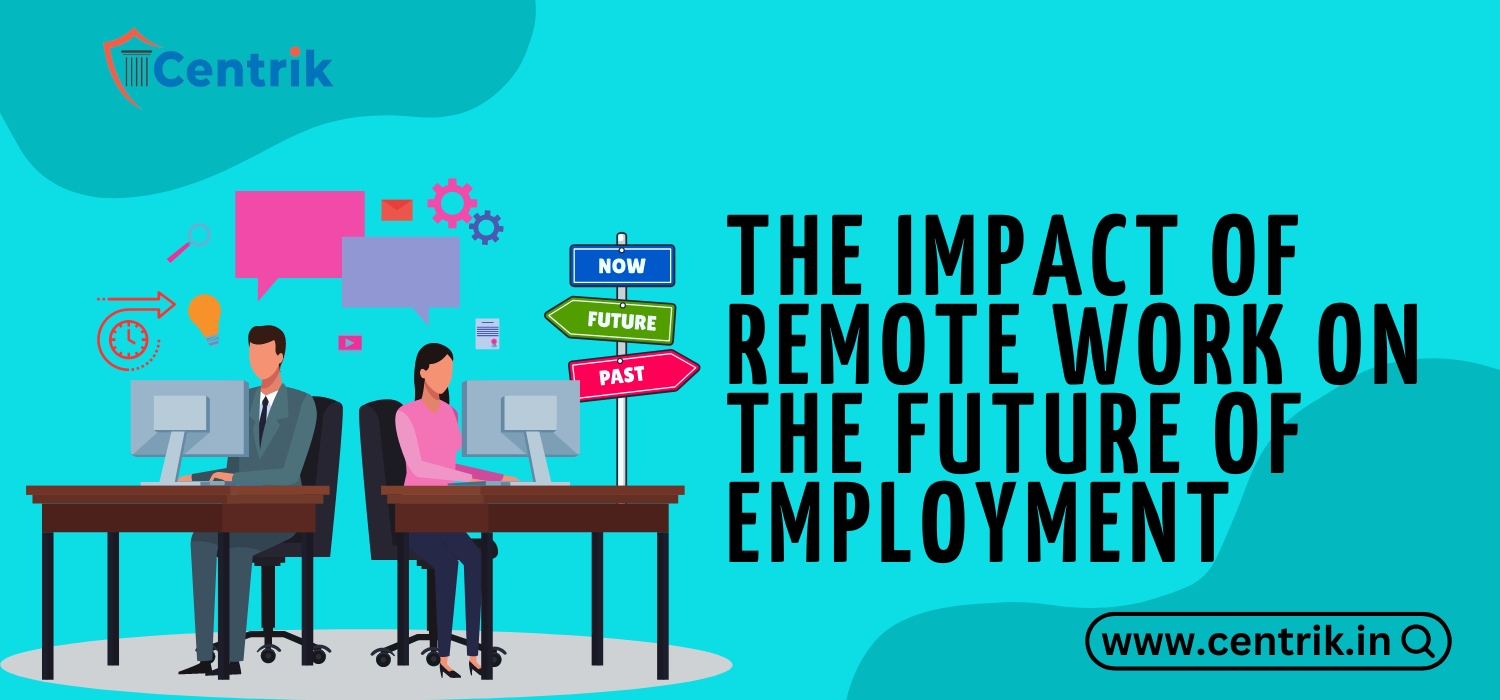INTRODUCTION
The COVID-19 pandemic has accelerated a shift towards remote work, transforming how companies operate and how employees perform their jobs. This seismic change has profound implications for the future of employment, reshaping everything from work-life balance to organizational structures and global labor markets.

REMOTE WORK: A PARADIGM SHIFT
Remote work refers to the practice of performing one’s job outside of a traditional office environment, often from home or another location. Key factors contributing to the rise of remote work include advancements in technology, changing attitudes towards work-life balance, and the necessity imposed by the pandemic.
KEY TRENDS AND IMPACTS
- Flexibility and Work-Life Balance: Remote work offers employees greater flexibility in managing their schedules and blending work with personal responsibilities, potentially leading to improved job satisfaction and well-being.
- Cost Savings and Efficiency: Companies benefit from reduced overhead costs associated with office spaces and increased productivity in some cases, as employees report fewer distractions and shorter commutes.
- Global Workforce Dynamics: Remote work enables companies to access a global talent pool, fostering diversity and inclusivity while challenging traditional notions of workplace geography.
CHALLENGES AND CONSIDERATIONS
Despite its benefits, remote work poses challenges that need to be addressed:
- Digital Divide: Disparities in access to technology and reliable internet connections may exacerbate inequalities, limiting opportunities for those in underserved communities.
- Team Collaboration and Culture: Maintaining team cohesion, fostering creativity, and building a strong organizational culture can be more challenging in a remote setting.
- Workplace Policies and Regulations: Companies must navigate legal and regulatory frameworks concerning remote work, including issues related to taxation, data protection, and employment rights.
FUTURE DIRECTIONS
As remote work becomes increasingly prevalent, several trends are likely to shape its future:
- Hybrid Work Models: Many organizations are adopting hybrid work models, combining remote and in-office work to balance flexibility with the benefits of face-to-face collaboration.
- Technology Integration: Continued advancements in communication tools, virtual collaboration platforms, and cybersecurity will further support remote work capabilities.
- Policy and Legal Reforms: Governments and policymakers may enact new regulations to address the challenges and opportunities presented by remote work, ensuring fair labor practices and equitable access to opportunities.
CONCLUSION
The rise of remote work represents a transformative shift in how work is organized and performed globally. While it offers numerous advantages in flexibility, efficiency, and global connectivity, it also presents challenges that require thoughtful consideration and adaptation. As businesses and policymakers navigate this new era of work, the future of employment is poised to be shaped by the ongoing evolution of remote work practices and their integration into broader socioeconomic structures.




 join For Updates
join For Updates